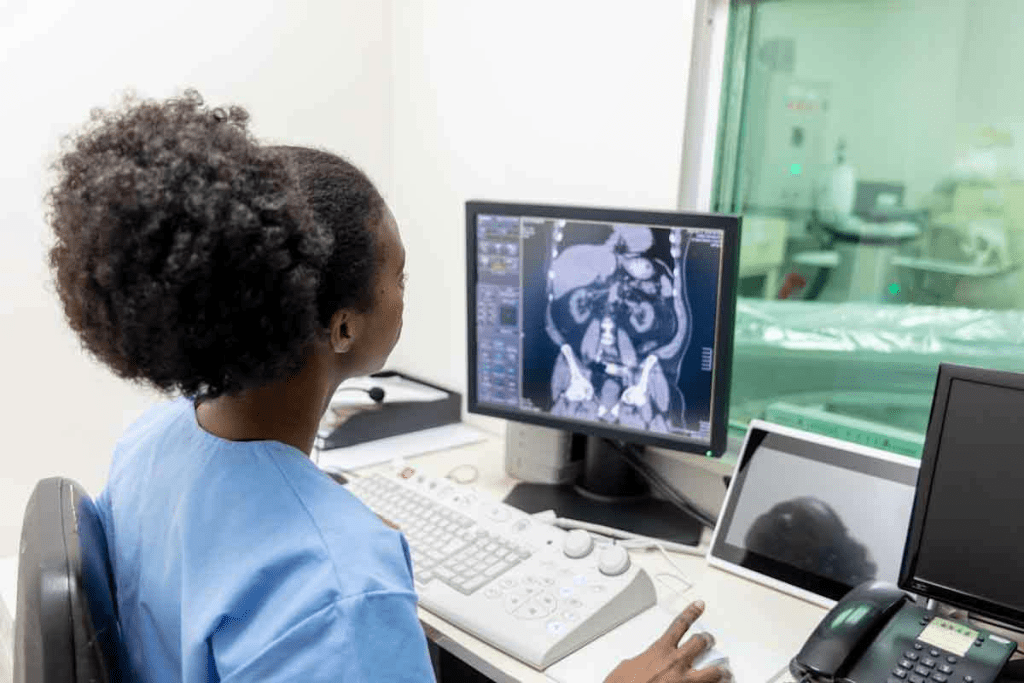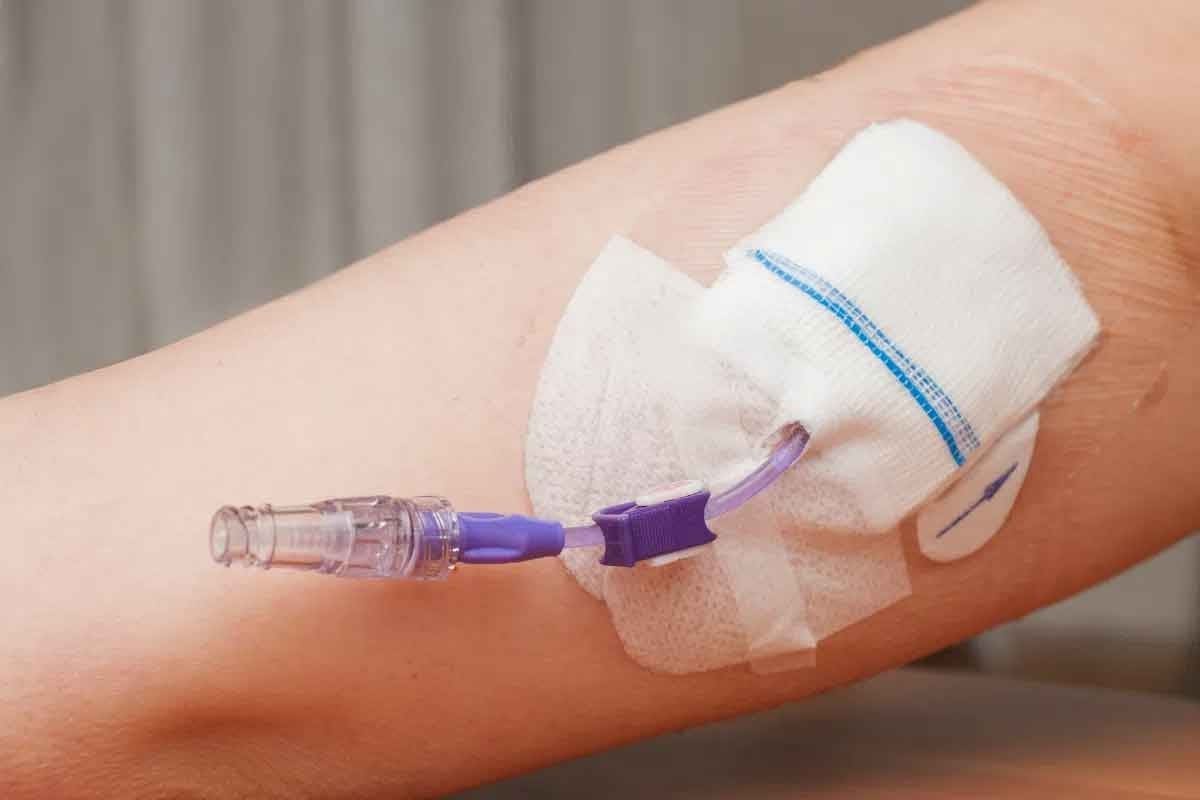Last Updated on November 27, 2025 by Bilal Hasdemir

Getting ready for a DaTscan procedure might seem tough, but with the right help, you can feel more confident. A DaT scan nuclear medicine test is a cutting-edge tool. It uses a special tracer and SPECT technology to see how dopamine works in the brain. This helps doctors diagnose diseases like Parkinson’s.
At Liv Hospital, we know how important it is to be ready for your nm dat scan. We follow the latest protocols and put our patients first. In this guide, we’ll show you how to get ready for your DaTscan imaging. We’ll answer any questions you might have.
Key Takeaways
- Understand the purpose and process of the DaTscan procedure.
- Learn how to prepare for the DaTscan imaging to ensure a smooth experience.
- Discover what to expect during and after the procedure.
- Find out how to care for yourself after the exam.
- Understand the importance of following your doctor’s instructions.
Understanding DaT Scan Technology and Purpose

To grasp the importance of a DaT scan, we need to explore its technology and purpose. It’s a key tool for diagnosing neurological disorders. It helps doctors check dopamine levels in the brain, which is vital for identifying different conditions.
What is a DaTscan and How It Works
A DaTscan uses nuclear medicine imaging. It involves injecting a radioactive tracer into the blood. This tracer attaches to dopamine transporters in the brain, making dopamine activity visible through Single Photon Emission Computed Tomography (SPECT) imaging.
Visualizing Dopamine Transporter Activity
The DaTscan lets doctors see where dopamine transporters are in the brain. This is key for checking dopamine activity and diagnosing diseases like Parkinson’s. The images from DaTscan are very detailed, giving insights into the brain’s dopamine system.
Here’s a comparison of DaTscan images between a healthy person and someone with Parkinson’s disease:
| Characteristic | Healthy Individual | Parkinson’s Disease Patient |
| Dopamine Transporter Density | Normal distribution | Reduced density, mainly in the putamen |
| DaTscan Image Appearance | Symmetrical, comma-shaped uptake | Asymmetric, reduced uptake, often seen as a dot or oval shape |
Clinical Applications of DaTscan Brain Imaging
DaTscan brain imaging is used in many ways, mainly for diagnosing and managing movement disorders. It’s great for telling Parkinson’s disease apart from other conditions like essential tremor. DaTscan’s accuracy helps doctors create better treatment plans.
Some main uses include:
- Diagnosing Parkinson’s disease and other Parkinsonian syndromes
- Distinguishing Parkinson’s disease from essential tremor
- Measuring how much dopamine transporter loss there is
- Tracking how the disease progresses and how well treatments work
When Is a DaT Scan Recommended?

Healthcare providers often suggest a DaT scan for unclear movement disorders. This helps in making a correct diagnosis and planning treatment.
A DaT scan is helpful when symptoms like tremors are hard to diagnose. Knowing when a DaT scan is needed helps patients prepare for their diagnosis.
Distinguishing Parkinsonian Syndromes from Essential Tremor
A DaT scan is key in telling Parkinsonian syndromes apart from essential tremor. Parkinsonian syndromes include disorders like Parkinson’s disease. They cause tremors, stiffness, and slow movement.
Essential tremor, by contrast, causes tremors but doesn’t cause as much motor dysfunction. A DaT scan shows dopamine transporters in the brain. This helps tell these conditions apart.
Symptoms That May Warrant a DaT Scan
Several symptoms might lead a doctor to suggest a DaT scan. These include:
- Tremors or shaking that are hard to diagnose
- Movement disorders that are hard to classify
- Symptoms are not responding to treatment as expected
- Uncertainty between Parkinson’s disease and other conditions or essential tremor
The Diagnostic Value in Uncertain Movement Disorders
A DaT scan is valuable for unclear movement disorders. It looks at dopamine transporters in the brain. This helps confirm or rule out certain conditions, guiding treatment.
This clarity is key to managing patient expectations and planning effective treatment. We know diagnostic tests can be scary. But a DaT scan is a valuable tool for the best care.
Pre-Appointment Medical Considerations
Before getting a DaT scan, it’s important to think about your health. This includes looking at your medical history and current health. It’s not just about the scan itself, but also about your overall health.
Important Medical History to Disclose
Tell your doctor about your full medical history before the DaT scan. This includes any past illnesses, surgeries, or allergies. Some conditions or medicines might change how the scan works or how you’re prepared.
- List any neurological conditions or previous diagnoses related to Parkinson’s disease or other movement disorders.
- Mention any recent or ongoing medical treatments, including surgeries or hospitalizations.
- Disclose any allergies, especially to medications or contrast agents used in imaging procedures.
Medication Review and Possible Interactions
It’s key to review your current medicines before the DaT scan. Some medicines can mess with the scan’s results or interact with the tracer used.
Medications to Discuss:
- Drugs that affect dopamine levels or neurotransmitter activity.
- Medications known to interact with the radiotracer used in DaT scans.
- Any recent changes in your medication regimen?
We suggest making a list of your medicines and talking to your doctor. This helps avoid any bad interactions that could mess up your DaT scan.
Pregnancy and Breastfeeding Considerations
If you’re pregnant or breastfeeding, tell your doctor. DaT scans are generally safe, but we take extra steps to protect you.
Important Considerations:
- If you’re pregnant, talk to your doctor about the risks and benefits of the DaT scan.
- Breastfeeding moms might need to stop breastfeeding for a bit after the scan because of the tracer.
By thinking about these health factors and talking to your doctor, we can make sure your DaT scan is safe and helpful. It will give us important information about your health.
The Week Before Your DaT Scan Procedure
In the week before your DaT scan, there are steps to take for a smooth process. We’ll guide you through these preparations. This will help you feel more confident about the procedure.
Medication Adjustments and Restrictions
It’s important to follow your doctor’s advice on medication changes. Some medicines can affect the DaT scan results. Your doctor might tell you to stop or change your dosage.
Medicines that could impact DaT scan results include:
- Certain antidepressants
- Anti-nausea medications
- Cold or allergy medications with pseudoephedrine
Make sure to talk to your doctor about your medications. They will guide you on what to do.
Dietary Guidelines to Follow
There are usually no strict diet rules before a DaT scan. But it’s best to stick to a normal diet. Your healthcare provider might give you specific diet advice.
Here are some general tips:
- Drink plenty of water to stay hydrated
- Avoid too much caffeine or other stimulants
- Have a light meal or snack before, if your doctor says so
Scheduling and Logistical Preparations
To make your experience smooth, plan ahead. This includes:
| Preparation Task | Recommended Timeframe |
| Confirm appointment details | At least 1 week before |
| Arrange transportation to and from the appointment | At least 2-3 days before |
| Plan for time off work or other responsibilities | As needed, based on appointment timing |
By following these tips and staying in touch with your healthcare provider, you’ll be ready for your DaT scan.
48 Hours Before: Final Preparation Steps
As we get closer to your DaT scan, it’s key to get ready. This time is important to make sure your body is ready. You also need to have everything you need for the scan.
Thyroid Blocking Medication Administration
48 hours before your DaT scan, you’ll take thyroid-blocking medication. This stops radioactive iodine from reaching your thyroid gland. Make sure to take the right amount at the right time, as your doctor tells you. This step is vital for a safe and effective scan.
Food and Drink Guidelines
In the 48 hours before your scan, you might need to eat certain foods. Always check with your doctor about what you can and can’t eat. Some foods could mess with the scan. Eating right helps make sure your scan results are good.
What to Wear and Items to Bring
On scan day, wear comfy clothes that you can easily take off. Don’t wear anything with metal, as it could mess with the scan. Also, bring your insurance cards, ID, and a list of your meds. Being ready makes your visit easier.
By doing these final steps, you’ll be ready for your DaT scan. If you have any questions, always ask your healthcare provider for help.
Day of the DaT Scan: Step-by-Step Process
Getting ready for your DaT scan? Knowing what to expect can make you feel more at ease. On the day, you’ll go through a series of steps to get accurate results.
Arrival and Check-in Procedures
When you arrive at the nuclear medicine department, start by checking in. You might need to show ID and share your medical history. Make sure to arrive on time and have all necessary documents ready.
Be prepared to:
- Provide identification
- Confirm your medical history
- Discuss any concerns or questions with the medical staff
Radiotracer Injection Process
The next step is getting a radiotracer injection. This is a small amount of radioactive material to see dopamine transporters in your brain. It’s given through a vein in your arm.
The injection is quick, and you might feel a slight pinch or stinging.
The 3-6 Hour Uptake Period
After the injection, you’ll wait 3 to 6 hours. This lets the radiotracer absorb into your brain’s dopamine transporters. You can either leave or stay in the waiting area during this time.
During the uptake period, it’s recommended to:
- Stay hydrated
- Avoid strenuous activities
- Follow any specific instructions provided by the medical staff
Final Preparations Before Imaging
Before imaging starts, the medical staff will get you ready. You might need to change into a hospital gown and remove metal objects or jewelry. It’s important to follow their instructions closely.
Following their instructions is key to a smooth scan.
What to Expect During the DaT Scan Nuclear Medicine Procedure
Getting ready for your DaT scan? Knowing what to expect can help ease your nerves. We’re here to walk you through each step, making sure you’re comfortable and well-informed.
Positioning in the SPECT Scanner
You’ll lie on a table that slides into a Single Photon Emission Computed Tomography (SPECT) scanner. This scanner takes detailed images of your brain. Our team will make sure you’re comfy and in the right spot for the best images.
Duration and Scanner Operation
The DaT scan usually lasts about 30 minutes to an hour. The SPECT scanner will move around your head, taking pictures from different angles. It uses advanced tech to spot the radioactive tracer in your brain, giving us important information for your diagnosis.
Comfort Measures and Communication
We know being in a scanner can be scary. To help you relax, we keep things comfy and talk to you the whole time. You can even chat with our technologists through an intercom if you need to.
“The DaT scan is a painless and non-invasive procedure. Our team is dedicated to making you feel as comfortable as possible throughout the process.”
How DaTscan Images Are Captured
The DaTscan images are made as the SPECT scanner finds out where the radioactive tracer is in your brain. This info is turned into detailed pictures that help doctors see how dopamine is working. These pictures are key to diagnosing and treating conditions like Parkinson’s disease.
Knowing what happens during a DaT scan can make you feel more ready and less worried. Our team is all about giving you the best care and support on your diagnostic journey.
Potential Risks and Safety Considerations
It’s important to know the risks and safety tips for DaT scan procedures. DaT scans are generally safe, but there are things to think about before you get one.
Radiation Exposure Levels
DaT scans use a small amount of radioactive material. This exposure is usually low, like other nuclear medicine tests. If you’re worried, talk to your doctor, even if you’ve had other tests with radiation.
Possible Side Effects from the Radiotracer
Some people might feel side effects from the radiotracer. These can be mild, like headaches or feeling dizzy. Rarely, more serious reactions can happen. Tell your doctor about any allergies before the test.
Contraindications for DaT Scan Procedures
Some people shouldn’t get DaT scans. Women who are pregnant or breastfeeding should tell their doctor. Also, people with certain health issues or taking certain medicines might need different tests.
When to Alert the Technologist During the Procedure
If you feel any pain or discomfort during the scan, tell the technologist. Also, let them know if you’re feeling anxious or claustrophobic. This helps make the scan go smoothly and safely.
Post-Procedure Care and Results
After your DaT scan, your healthcare team will guide you on care and results. It’s important to follow their advice for your health and accurate results.
Immediate Aftercare Instructions
You’ll get specific care instructions after your DaT scan. These might include drinking lots of water, resting, and avoiding certain medicines. It’s key to follow these to avoid side effects from the radiotracer.
Key Aftercare Instructions Might Include:
- Drinking plenty of fluids to help flush out the radiotracer
- Avoiding close contact with pregnant women and young children for a specified period
- Resuming normal activities as advised by your healthcare provider
Radiation Safety Precautions
Even though DaT scans use safe amounts of radiation, there are precautions. Your team will tell you how to protect others, like pregnant women and kids.
| Precaution | Description | Duration |
| Avoid close contact | Maintain distance from pregnant women and children | 24 hours |
| Hydration | Drink plenty of fluids | 24-48 hours |
When and How You’ll Receive Results
A healthcare expert will interpret your DaT scan results. You’ll know when and how to get them, like at a follow-up or by phone.
Understanding DaTscan Images and Interpretation
DaTscan images show dopamine activity in your brain. A specialist will look at these to check for dopamine issues, which can point to diseases like Parkinson’s.
Talking to your doctor about your DaTscan results is important. They can explain what the images mean for your health and what to do next.
Conclusion: Navigating Your DaT Scan Experience with Confidence
Understanding the DaT scan procedure can make patients feel more ready for their appointment. Research shows that DaTscan imaging greatly helps in diagnosis and treatment. It impacts 68% of patients’ diagnoses and changes 58% of their treatment plans.
A study on the National Center for Biotechnology Information website shows DaTscan’s role in diagnosing movement disorders like Parkinson’s disease. You can find more about the study and its results on the National Center for Biotechnology Information website.
Knowing about the DaT scan process, from start to aftercare, helps patients have a better experience. We suggest patients ask their healthcare provider questions. This way, they can confidently go through their DaT scan.
FAQ
What is a DaT scan, and how does it work?
A DaT scan is a test that uses a special tracer to see how dopamine works in the brain. It helps doctors figure out what’s wrong with the brain, like with Parkinson’s disease or essential tremor.
What is DaTscan imaging used for?
DaTscan imaging helps doctors diagnose and manage brain disorders. It shows how dopamine acts in the brain, which is key to movement disorders.
How long does a DaT scan take?
A DaT scan takes about 4-6 hours. The actual scan time is 30-60 minutes.
What are the possible risks and side effects of a DaT scan?
DaT scans are generally safe. But there’s a small risk of radiation and side effects from the tracer. These can include allergic reactions or changes in blood pressure.
How should I prepare for a DaT scan?
To get ready for a DaT scan, follow certain steps. Adjust your meds, stick to a special diet, and take thyroid-blocking meds as told by your doctor.
What happens on the day of the DaT scan?
On the DaT scan day, you’ll go to the nuclear medicine department. You’ll get a radiotracer injection, wait, and then get scanned.
What are the contraindications for a DaT scan?
You can’t have a DaT scan if you’re pregnant or breastfeeding. Some medical conditions might also be a no-go.
How will I receive my DaT scan results?
A healthcare pro will look at your DaT scan results. You’ll usually get them in a few days to a week.
What do DaTscan images show?
DaTscan images show dopamine activity in the brain. This helps doctors diagnose and manage brain disorders.
Are there any specific aftercare instructions following a DaT scan?
After a DaT scan, follow radiation safety tips. Avoid close contact with pregnant women and young kids for a bit. Also, listen to any extra advice from your healthcare team.
Can I undergo a DaT scan if I have a medical implant or device?
Tell your doctor about any implants or devices before the scan. They might affect the scan’s quality.
How is a DaT scan different from other imaging tests?
A DaT scan is special because it focuses on dopamine activity. It gives unique information that other tests like MRI or CT can’t.
References
- Morbelli, S., et al. (2020). EANM practice guideline/SNMMI procedure standard for dopamine transporter imaging with 123I-ioflupane SPECT. European Journal of Nuclear Medicine and Molecular Imaging, 47, 1885-1894. https://pmc.ncbi.nlm.nih.gov/articles/PMC7300075/






